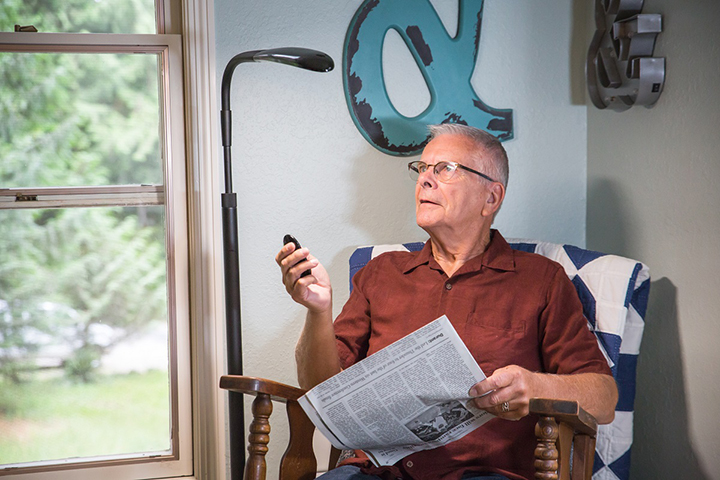What is Occupational Therapy? According to the American Occupational Therapy Association (AOTA), occupational therapy helps people participate in everyday activities. “Common occupational therapy interventions include helping children with disabilities to participate fully in school and social situations, helping people recovering from injury to regain skills, and providing supports for older adults experiencing physical and cognitive changes.” Occupational therapists often visit children and adults at school, their homes, or their place of work to make recommendations on assistive technology, adaptive equipment, and adjustments around the home, work, or school to meet the needs of the individuals.

What can occupational therapy do for those with vision loss? Through occupational therapy, someone with a visual impairment can learn to fully utilize their remaining vision. By making recommended changes around your home, work, or school you can adapt your environment to meet your needs. These changes can include:
- adding tactile or color-coded markers to items so they are easily identifiable
- updating or increasing lighting
- using contrast to make items stand out
- adding adaptive equipment or assistive technology as needed
- organizing your space to reduce clutter and tripping hazards
An occupational therapist can also help an individual learn new ways to accomplish daily tasks such as cooking, grooming, reading, and writing. The occupational therapist can also help to increase mobility and getting you out and about, so you will be able to go to the store, or for a walk. When you want to start something new, such as, a job, a hobby, or taking classes, occupational therapy can help you accomplish these tasks.
How to qualify for occupational therapy services? If you are a student attending a public school, you will need to qualify for special education services. Based on this, an Individual Education Plan (IEP) will be developed, and a referral is sent to have an occupational therapist evaluate the student’s abilities to see if their services would be helpful. As an adult with low vision, you can talk to your eye care professional, low vision specialist, or primary care doctor to request an evaluation by an occupational therapist. Some low vision specialists have occupational therapists who work in their office and do home visits to determine where important changes can be made.
Do you need suggestions for products that would help you make practical changes around your home? Would you like to know what assistive technology is available to make reading and writing easier? Contact us to request a FREE Optelec Low Vision Essentials catalog.
Resource: American Occupational Therapy Association - AOTA
Apr 08, 2020


